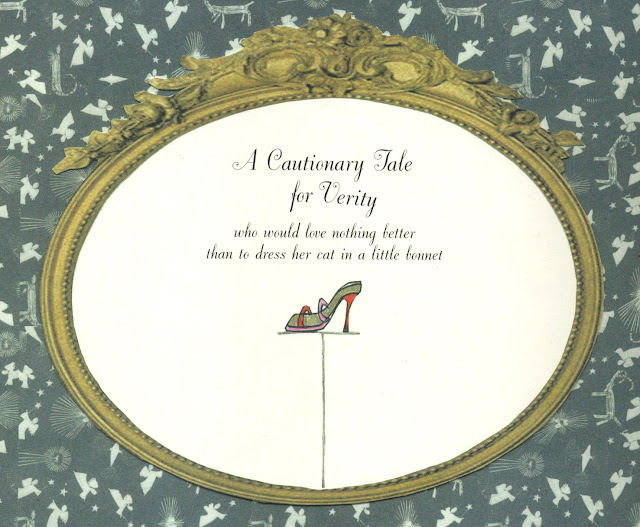A look at the challenges of depicting time in picture book form
One of my favourite ever films is The Time Machine. The original one, the proper one, the one from 1960, from the book by HG Wells.
The film features the best-styled Time Machine ever: “Everyone knows what a time machine looks like,” says physicist Sean Carroll, “something like a steampunk sled with a red velvet chair, flashing lights, and a giant spinning wheel on the back.”
There’s a moment when our Time Traveller tries out his magnificent Edwardian contraption and pushes its crystal knob towards the future, and days and nights start to flash by and the sun and moon chart visible tracks across the sky and the mannequin in the shop opposite bears witness to the march of time with her shortening fashions.
We’re (hopefully) reaching the end now of a year spent in lockdown. A year where days have flashed past, with the same daily routines, doing the same daily walks, watching the unfurling of Spring warm its way into Summer and noticing the progress of birdsong yield to late summer bird quietness. The repetition makes you pay attention to small differences. The tiny daily changes add up to slices from a stop motion film of the seasons’ progress. But I wonder whether some events will have been missing, the ones that make memorable experiences. With what will the memories be forged? – the highs and lows – the terror before real events with a real live audience, the monkey of dread sitting on your chest beforehand, and the collaboration and achievement and adventure when a long-planned event goes actually, unbelievably, well.
So lately I’ve been thinking about time, especially as the book I’m making at the moment is all about time.
This book really started about 10 years ago, at the Oxford Museum of Natural History, where I would often hang out with my small son Herbie. Admiring the Iguanodon skeleton, I realised I didn’t even know WHEN the dinosaurs had been extinctified by that asteroid (it was 66 million years ago) OR anything about what was going on BEFORE the dinosaurs (a LOT!) or how old the Earth was (about 4.6 billion years).
Then I wanted to see what 4.6 billion years looked like, and in the process of trying to find that out, I ended up making a model book about the story of life on Earth being performed in a shoebox theatre on a town dump. By insects. So that’s what I’m making for real now.
 |
| My model book for the story of life on Earth |
 |
| It was a very long zig-zag and it would have been impossible to publish in this format. |
 |
| The reverse side of the model book had the tape measure of time on it, to show what 4.6 billion years looks like... |
At primary school you get to learn about the Greeks and the Egyptians and the Tudors, and it’s good to have a timeline of the last ten thousand years to hang these on. But maybe what young children need too, is a sense of the fundamental timeline, the Story of our world, the 4.6 billion year story of Life on Earth.
So what does 4.6 billion years look like?
For my time line, my Tape Measure of Time, I decided to have one centimetre represent one million years. That makes my total lifeline of the Earth 45 metres long which is about 10 cars long or a small street. But for loads of that time the biggest life on Earth was microbial. It wasn’t until around 600 million years ago that things got really interesting, and we start to get animals with bodies, and then the whole story of life speeds up for the last 500 million-year roller-coaster ride of changing climates and mass extinctions and explosions of different life forms. All the stuff that’s interesting to us has happened in the last 5 metres – it can fit along my stairs and landing.
 |
| This was my original timeline - each centimetre was 10 million years - so the last 500 million years happens REALLY FAST, in half a metre. |
At my Tape Measure of Time scale of 1cm to 1 million years, each open double-page is around 50 cm wide – so about 50 million years. Quite a lot of the Ages of Earth – the Devonian, the Carboniferous, the Permian, and all the rest – lasted very roughly 50 million years.
 |
| Here's the Tape Measure at the 1cm to a million years scale. |
 |
| Here are my insect Troupe acting out the Carboniferous Era. |
Modern humans first appear about 200 000 years ago, which is 2mm ago on my 45m timeline. The oldest cave painting is from about 45,000 years ago: that’s less than half a millimetre ago.
Humans farming and the Holocene time of warmth and plenty begins about 10,000 years ago: that’s 1/10 of a millimetre, or a hair’s breadth.
The last 100 years, where we have unleashed the enormous power of fossil fuels and a farming fertiliser revolution and human population has grown from nearly 2 to nearly 8 billion people, and the populations of wild animals of earth have plunged: all this has happened in one thousandth of one millimetre on my Tape Measure: cut a hair into 100 thinner hairs to find this width.
 |
| Ice Age Megafauna illustration by Sergio De La Rosa |
If you visited Earth 100,000 years ago, it would be a place of astounding megafauna: mammoths, mastodons, woolly rhinos, giant sloths, sabre-toothed cats, giant elks and aurochs. As humans spread around the world from 60,000 to 10,000 years ago – very mysteriously the local megafauna always became extinct. Maybe the vanishing took a few thousand years – it may have been too slow for people to notice the changes. And it didn’t happen deliberately, I think – you can see the awe for the beasts in the cave paintings – but maybe the people didn’t see that occasional predation of what looked like an endless source of big animals eventually wasn’t in tune with the animals themselves – essentially, was unsustainable.
Around 10,000 years ago at the start of the Holocene, just about all the megafauna of America and Europe and Australia was gone. The place where megafauna lived on was in Africa. Was this because the humans and the megafauna had evolved with each other? In all the other places, early people had migrated in, and then mysteriously the megafauna vanished.
Maybe evolving with the megafauna rather than encountering them, kept a balance. And somehow we have to create balance today.
We are prisoners of our short lifespans – we last for a blink of an eye in the Earth’s lifespan but to us 100 years is forever. And with nature we fall victim to shifting baselines: you get used to there being less.
We have to give back habitat to nature. Because if we don’t have a balance but a slow but inexorable shrinking of animal populations it leads relentlessly to extinctions – because that’s what enough time mixed with a slow process of reduction will always do. In a country like Great Britain, where we have made so many predators extinct, and appropriated so much of the land to human uses and fragmented the landscape with tarmac – we should especially be halting the appropriation of wild or unbuilt-on land to human uses. We also should contribute to the wilderness and wildlife of the planet.
Roman Krznaric’s book The Good Ancestor is about how to look further. Let’s look into the future: Earth has about 500 million good years left, before the sun swallows it up. That’s another 5 metres on my tape measure. That’s as long as we’ve already had visible animal life for. We have to use our imaginations to see longer and further into the future – to imagine a future where people and the rest of the world are in balance: what would that look like? And in the context of that, examine everything we do: does doing this ultimately wreck the planet, or could this happen happily for ever?
(Building on wild spaces. Intensive animal agriculture. Bottom trawling. Emitting CO2. I’m looking at you.)
But now, with a jolt, I’m getting in my backwards time machine and zooming back to 15 years ago, 2006.
I’m in the John Radcliffe Hospital; my son Herbie has just been born. He was born at 6.45am after a night of gas and air and the help of the world’s best midwife. Now it’s mid-morning. His dad Tony needs to return home to feed the cat, and then I will be alone with our new life form, who is asleep at the moment.
But there’s a TV by my bed and it works – (what are the chances of that?) and it’s playing the film of The Time Machine (what are the chances of that?). The original 1960 one, the good one.
Off you go Tony, I say, I’ll be fine. This is my absolutely favourite film.
I listen to the lilting haunting theme music of The Time Machine, and I think about the small new life-form that’s just been born. I think about how it has just started on its journey through life, a journey that travels only one way, that my new life-form is a time machine, that we’re all time machines, travelling ever onwards, only going forwards, while our brief window of experience is open. And the brief window of experience and existence shines like a short flash of light in an infinite oblivion that stretches forever before and beyond it.
But that’s the danger of listening to lilting haunting music when you’re marinating in hormones after just giving birth to a baby.
A nice doctor turns up to check something medical. Tears are flooding down my face. She suggests that she returns at another time. Between gulps I just about manage to explain how much I really really love this film.
Mini's latest book-involvement is The Book of Not Entirely Useful Advice, with AF Harrold. Her BlogSite is at Sketching Weakly.
















































